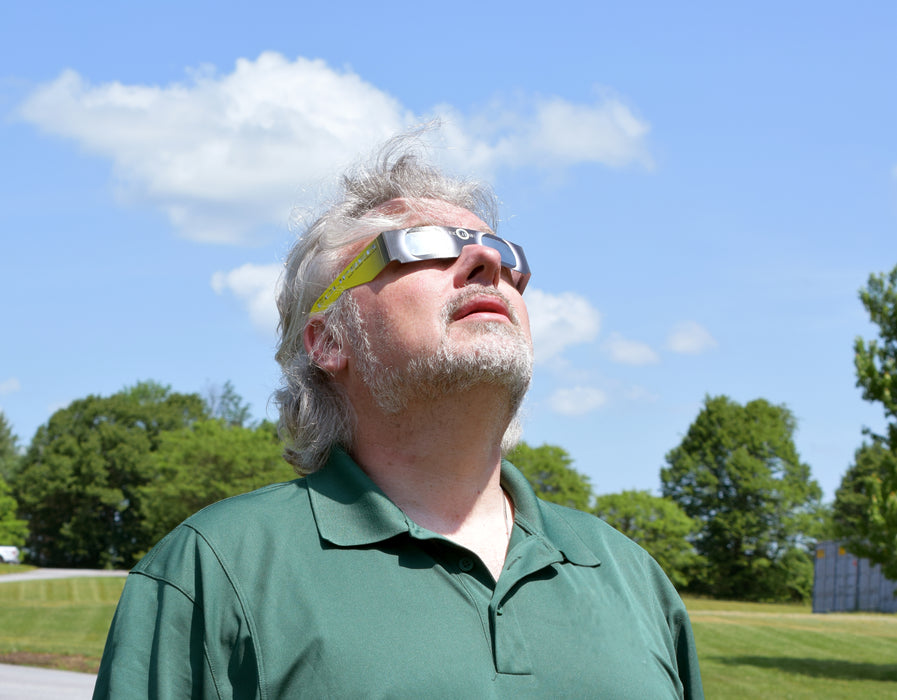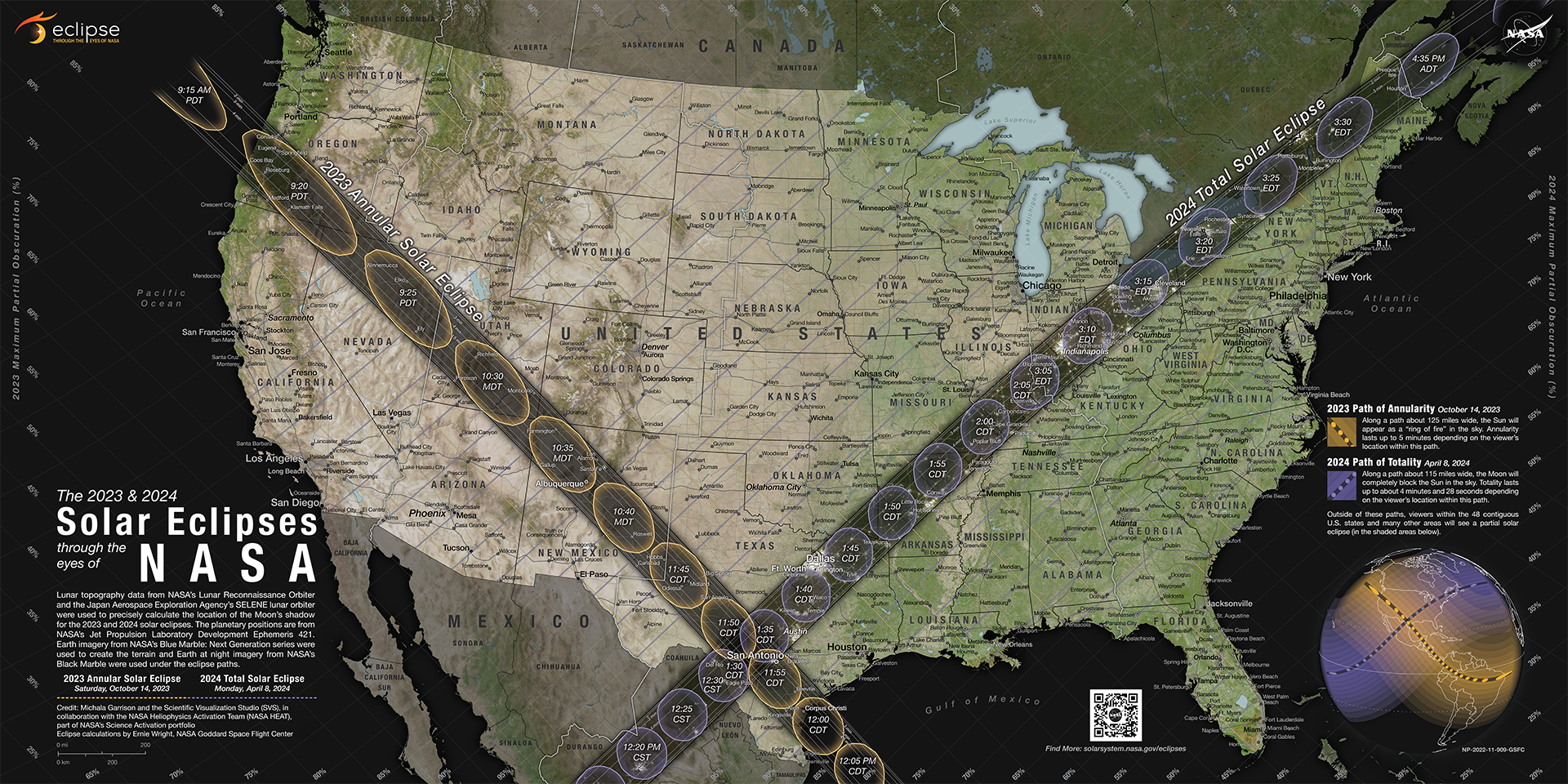US Customer Support
US-based Customer Support
Free US Shipping on Orders Over $100

As a science company, we're geeking out about the upcoming celestial show called the solar eclipse on Saturday October 14, 2023. When the Moon glides between the Earth and the Sun, a solar eclipse takes center stage. But this isn't just any solar eclipse - it's an annular eclipse. In this captivating event, the Moon appears slightly smaller than the Sun, creating a stunning "ring of fire" effect in the sky. This is because the eclipse takes place a mere 4.6 days after the Moon reaches its apogee on October 10, 2023, making its apparent size reduced. While it might start like a partial eclipse, the view will span a vast region on Earth, painting the sky with an otherworldly light. Don't miss this astronomical marvel - and be sure to do it safely.
Here are our 3 tips for how to view the solar eclipse safely and know what you're looking at.
1. Eclipse Viewing Safety Measures and How to protect your eyes during a solar eclipse - Solar Eclipse Glasses

During an annular solar eclipse, the Sun isn't entirely obscured by the Moon, meaning it's never safe to observe without specialized eye protection. Regular sunglasses, no matter how dark, are inadequate for this task. Instead, utilize solar viewing glasses that adhere to CE & ISO 12312-2 international standard. Before use, ensure they aren't damaged and supervise children using them.
Avoid using these glasses with binoculars, telescopes, or cameras, as the Sun's rays can burn through the filter and harm the eyes. If you don't have the appropriate glasses, indirect viewing methods like the pinhole projector are recommended. This technique allows you to safely observe a projection of the Sun without looking at it directly.

Elementary School: Imagine the Sun is a big bright flashlight and the Moon is a smaller coin moving in front of it. Sometimes, the Moon doesn't cover the whole Sun, but only the middle part, leaving a bright ring of light around the edges. This ring looks like a donut and is called an annular solar eclipse!
High School: A solar annular eclipse happens when the Moon passes directly between the Earth and the Sun. However, the Moon doesn't always appear the same size from Earth – it can seem smaller or larger based on its distance from us. During an annular eclipse, the Moon is a bit farther away, so it looks smaller. This means it doesn't completely cover the Sun. Instead, it leaves a visible ring (or annulus) of the Sun shining brightly around it.
College: An annular solar eclipse is a celestial event where the Moon, in its elliptical orbit, reaches its apogee (farthest point from Earth) and transits the Sun. Due to the increased distance, its apparent diameter is smaller than the Sun's. When they align, the Sun's outer edges remain visible, creating an "annulus" or a ring-like appearance. This differs from a total solar eclipse, where the Moon completely obscures the Sun, given its relative size and position in its orbit.
PhD: In the context of celestial mechanics and the intricate dance of celestial bodies, an annular solar eclipse presents a fascinating observational phenomenon. It arises from the interplay of the Moon's elliptical orbit and its angular diameter relative to the Sun at different points in its orbit. Specifically, during the Moon's apogee, its apparent size isn't sufficient to occult the entire solar disk. This results in the Sun manifesting a radiant annulus, a consequence of its photosphere being visible beyond the Moon's antumbra. The intricate geometry and precise positioning required for this phenomenon offer valuable opportunities for studies in solar physics, particularly in understanding the Sun's limb and atmospheric characteristics.
If you're a science educator, a parent or caregiver that loves sharing this event with kids, our Illuminated Sun, Earth & Moon Orbital Model can give kids a hands on way to visualize eclipses.